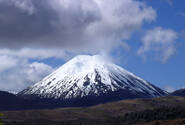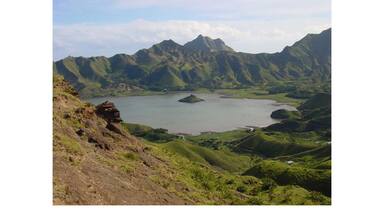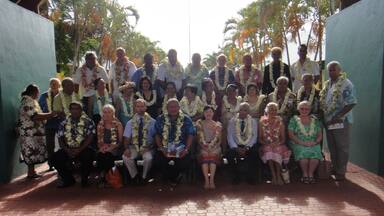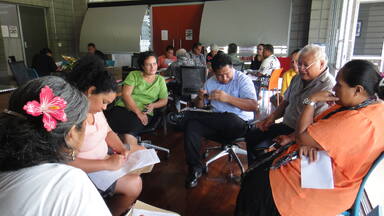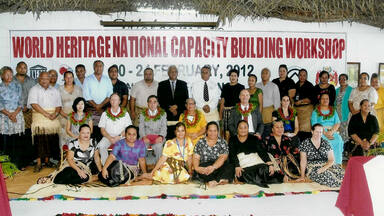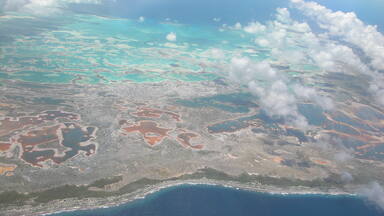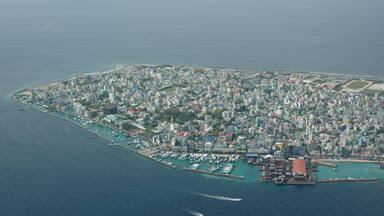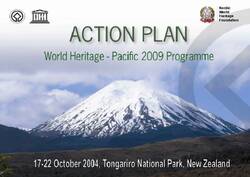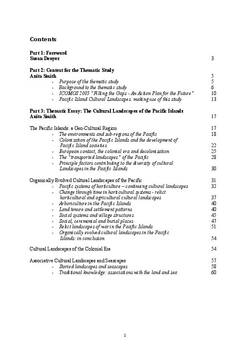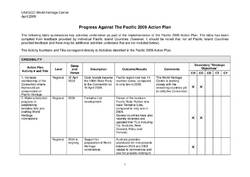Despite its extraordinary cultural and biological diversity and richness, the Pacific is the most under-represented sub-region on the World Heritage List.
To redress this imbalance, World Heritage Global Strategy meetings were held in the Pacific - in Fiji in July 1997 and in Vanuatu in August 1999. As a result, many Pacific Island countries joined the World Heritage Convention.
However, the results of the first cycle of periodic reporting for the Asia-Pacific region in 2003 indicated that there was still an imbalance, with only one property in the Pacific Sub-Region on the World Heritage List (East Rennell in the Solomon Islands)*.
The Pacific 2009 programme was thus launched in 2003 with the following aims.
- Ensure full membership of the World Heritage Convention in the Pacific to strengthen a collaborative sub-regional approach to implementation;
- Raise awareness about the World Heritage Convention and the potential benefits of World Heritage in the Pacific;
- Build capacity for the preparation of Tentative Lists and nominations of properties for inclusion in the World Heritage List;
- Ensure the representation of the Pacific cultural and natural heritage on the World Heritage List within the framework of the Global Strategy for a credible, balanced and representative World Heritage List;
- Promote trans-boundary and/or serial marine and terrestrial nominations including serial cultural landscape projects; and
- Build partnerships with Government organizations, NGOs, international and multilateral organizations and donors for assistance in the implementation of the WH Convention in the Pacific.
An Action Plan for the implementation of the Pacific 2009 Programme was developed by representatives from all the State Parties from the region in a workshop held in New Zealand in October 2004. Since then, stakeholders are making efforts to implement the activities identified in the Action Plan.
Major Progress
Whilst remaining one of the least-represented regions and experiencing lack of capacity and under-resourcing, there has been substantial progresses made in the region, including:
- Three more sites in the Pacific Sub-region were inscribed in 2008: Kuk Early Agricultural Site (Papua New Guinea), Chief Roi Mata's Domain (Vanuatu) and Lagoon of New Caledonia (France);
- A majority of Pacific Island Countries have now ratified the Convention, with the Cook Islands most recently joining in January 2009;
- Tentative Lists have been developed in almost all the States Parties in the Sub-region; and
- Several sub-regional, national and local capacity-building workshops have been implemented.
Partners
Under the umbrella of the Pacific 2009 Programme, the efforts of UNESCO (Apia and WHC and other HQ units),IUCN, ICOMOS, ICCROM, SPREP (South Pacific Regional Environmental Programme), PIMA (Pacific Islands Museums Association) and other relevant organizations (including NGOs such as CI, WWF, TNC, regional universities), along with interested States Parties from the region, the donors (existing and new) and the beneficiary countries are being brought together in a more coordinated way than before. In addition, the Australian government established the Australian Funds-in-Trust at UNESCO in 2008 with special focus on supporting World Heritage activities in the Pacific.
*The following World Heritage properties situated in the Pacific Sub-Region, but are from non-Pacific State Parties, were also already on the World Heritage list in 2003: Hawaiian Island Volcanoes (USA), Henderson Island (UK) and Rapa Nui National Park (Chile).
